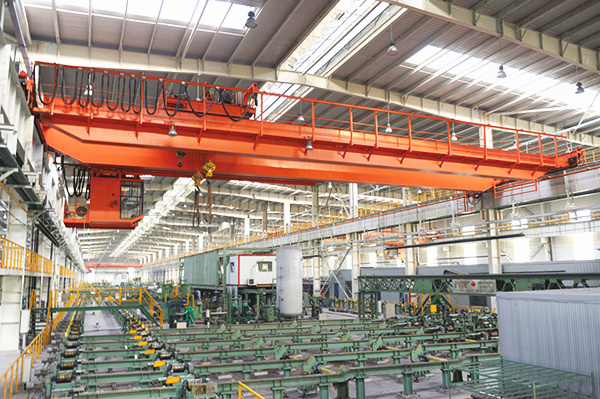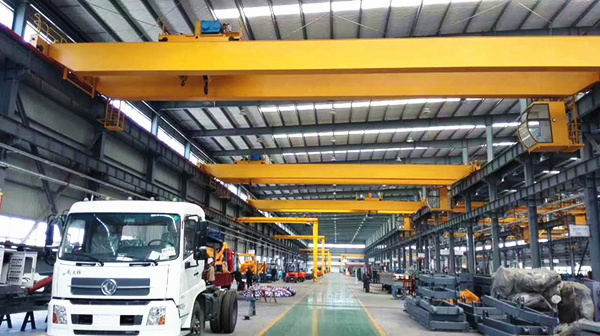Operating an overhead crane with a 30 ton lifting capacity demands a combination of technical skill, situational awareness, and adherence to safety protocols. Whether employed in manufacturing, construction, or heavy industry, the successful operation of such a powerful piece of equipment is crucial for efficient material handling and workplace safety. In this comprehensive guide, we will delve into the key steps and considerations to master the operation of a 30 ton overhead crane, emphasizing safety, precision, and operational efficiency.

Pre-Operational Checks
Before initiating any lifting tasks, conducting thorough pre-operational checks is imperative. This includes a visual inspection of the crane’s structural components, such as the bridge, trolley, and hoist, to ensure they are free from visible damage, wear, or defects. Additionally, verifying that all safety devices, including limit switches and emergency stop buttons, are in proper working condition is essential. The condition of the crane’s wire ropes or chains should be closely examined for signs of wear, kinks, or deformities.
Understanding Control Systems
Familiarity with the overhead crane’s control systems is paramount. The operator must understand the functions of the pendant control or cabin control panel, depending on the crane’s configuration. This includes becoming proficient in the use of buttons, levers, and switches to maneuver the crane along the bridge, control the trolley’s lateral movement, and lift or lower loads with precision. Thorough training on the control interface ensures that the operator can navigate the crane smoothly and respond promptly to changing operational requirements.
Load Capacity and Rigging
Accurate load assessment is a critical aspect of operating a 30 ton overhead crane. Operators must be well-versed in the crane’s load capacity chart, understanding the limitations based on the span, lifting height, and configuration. Rigging plays a crucial role, and the operator should be trained in selecting the appropriate lifting attachments, ensuring they are securely attached to the load, and understanding the impact of load positioning on stability.
Safe Lifting Practices
Implementing safe lifting practices is fundamental to the successful operation of a 30 ton heavy duty overhead crane. This includes avoiding sudden starts or stops, preventing load swinging, and maintaining a stable load during lifting and lowering. Load positioning and travel paths should be carefully planned to avoid obstacles, and the operator should be aware of the crane’s blind spots. Clear communication between the operator and any ground personnel is essential, especially when lifting or moving large loads.

Emergency Procedures
Operating a 30 ton overhead crane requires a thorough understanding of emergency procedures. Operators must be trained to respond swiftly to any unforeseen circumstances, such as power failures, equipment malfunctions, or emergencies requiring an immediate halt to operations. Familiarity with the location and proper use of emergency stop buttons, as well as knowledge of evacuation protocols, ensures a prompt and coordinated response in critical situations.
Continuous Monitoring
Vigilant monitoring of the crane and its surroundings is an ongoing responsibility for the operator. This includes keeping a close eye on the load, checking for any signs of equipment malfunction, and monitoring environmental conditions that may impact safe crane operation, such as high winds. Continuous situational awareness is crucial to identify and address potential hazards before they escalate.
Routine Maintenance
Regular maintenance is key to ensuring the longevity and reliability of the 30 ton overhead crane. Operators should follow a routine maintenance schedule, which includes lubricating moving parts, inspecting electrical components, and addressing any signs of wear or deterioration promptly. Reporting any observed issues to maintenance personnel for thorough inspections and repairs is essential to prevent unexpected breakdowns.
Training and Certification
Proper training and certification are prerequisites for anyone operating a 30 ton overhead crane. Operators should undergo comprehensive training programs covering both theoretical knowledge and practical skills. Certification ensures that operators have demonstrated their competence in crane operation, safety procedures, and emergency response. Periodic refresher courses can help operators stay updated on best practices and industry regulations.
Operating a 30 ton overhead crane demands a blend of technical proficiency, safety consciousness, and meticulous attention to detail. From pre-operational checks and understanding control systems to safe lifting practices, emergency procedures, and routine maintenance, each aspect contributes to the overall efficiency and safety of crane operations. The commitment to continuous training and adherence to industry standards is paramount, ensuring that operators remain adept in the evolving landscape of heavy equipment operation. By mastering these key considerations, operators can navigate the challenges of lifting and moving substantial loads with precision and confidence, ultimately contributing to the success and safety of diverse industrial applications. Ask for operation manul from your crane supplier for more information.